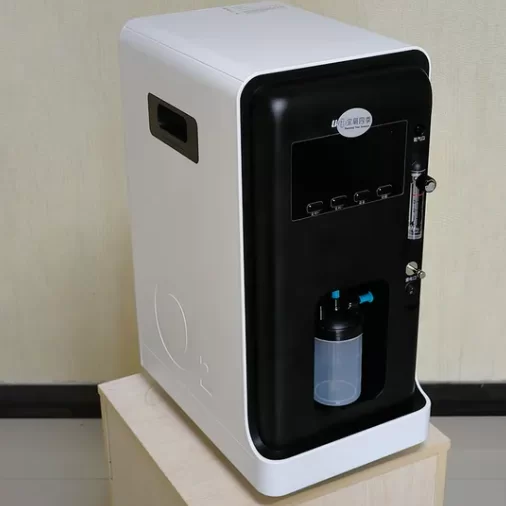1 M3 Liquid Nitrogen To Gas is a key solution in the medical device industry, specifically within Respiratory system equipment and oxygen concentrator. This article explores how Hebei Lixin Medical Engineering Co., Ltd. supports professionals with durable, high-performance products, and explains why this product is an ideal choice for businesses in these sectors.
![[1 M3 Liquid Nitrogen To Gas from Hebei Lixin Medical Engineering Co., Ltd.]](https://images.cnmqh.com/images/a10012/1752040514581-20250729021946.webp)
Table of Contents
- 1 M3 Liquid Nitrogen To Gas Overview
- Benefits & Use Cases of 1 M3 Liquid Nitrogen To Gas in oxygen concentrator
- Cost, Maintenance & User Experience
- Sustainability & Market Trends in medical device
- Conclusion on 1 M3 Liquid Nitrogen To Gas from Hebei Lixin Medical Engineering Co., Ltd.
1 M3 Liquid Nitrogen To Gas Overview
In healthcare supply planning, the phrase “1 M3 Liquid Nitrogen To Gas” often appears when teams model storage, delivery, and consumption of medical gases. At ambient conditions (approximately 1 atm, 20°C), liquid nitrogen expands significantly when vaporized—industry references typically cite an expansion ratio of roughly 1:694. That means 1 m³ of liquid nitrogen can yield in the range of hundreds of cubic meters of gaseous nitrogen. For decision makers comparing cryogenic delivery to on‑site generation, understanding this conversion is crucial for space, logistics, and safety planning. Within respiratory system equipment, however, many providers are shifting toward on‑demand oxygen generation using compact devices such as the oxygen concentrator 3L.
- In oxygen care, PSA (Pressure Swing Adsorption) concentrators deliver medical oxygen on demand, reducing dependency on delivered cylinders or liquid oxygen logistics tied to 1 M3 Liquid Nitrogen To Gas conversion models.
- The 3L oxygen concentrator category typically provides up to 3 L/min continuous flow with high oxygen concentration suitable for homecare and clinical backup scenarios.
- Hebei Lixin Medical Engineering Co., Ltd. is a reliable manufacturer offering robust engineering, responsive lead times, and professional support for distributors and healthcare providers worldwide.
Benefits & Use Cases of 1 M3 Liquid Nitrogen To Gas in oxygen concentrator
Why does “1 M3 Liquid Nitrogen To Gas” matter to oxygen concentrator buyers? Because it frames the operational contrast: delivered cryogenic gases require careful conversion calculations, storage infrastructure, and scheduled refills, whereas an oxygen concentrator 3L generates oxygen on site from ambient air. For homecare fleets, clinics, and ambulance backup, a compact 3L oxygen concentrator minimizes logistical friction while maintaining continuity of care.
- Applications: home oxygen therapy, remote clinics, sub‑acute facilities, nursing homes, and as a portable backup to central oxygen systems.
- Competitive advantages: continuous oxygen up to 3 L/min, compact footprint, energy‑efficient operation, simplified logistics versus cryogenic delivery, and reduced downtime risk tied to refill schedules.
- Hebei Lixin Medical Engineering Co., Ltd. leverages experience in respiratory system equipment to deliver dependable 3L oxygen concentrator solutions with distributor‑friendly service and training resources.
Cost, Maintenance & User Experience
Total cost of ownership is where many B2B buyers see clear ROI. Factoring the “1 M3 Liquid Nitrogen To Gas” conversion into cryogenic budgets highlights recurring expenses: storage, evaporation losses, transport, and refill coordination. A 3L oxygen concentrator shifts costs to predictable electricity consumption and routine maintenance (filters and periodic checks). For homecare programs, this often reduces per‑patient monthly costs while improving availability.
- Durability: rugged design for daily operation; simple preventive maintenance schedules support longer service intervals and fleet uptime.
- ROI: distributors report savings by lowering cylinder logistics and emergency refill charges; patients benefit from consistent access to oxygen at the point of care.
Sustainability & Market Trends in medical device
Global healthcare is moving toward decarbonization, supply‑chain resilience, and at‑home care. Minimizing reliance on cryogenic deliveries—where planning hinges on conversions like 1 M3 Liquid Nitrogen To Gas—can reduce transport emissions and vent losses. Compact oxygen concentrators align with these goals by enabling localized, on‑demand oxygen generation. Meanwhile, regulators continue emphasizing product quality, safety, and lifecycle traceability across respiratory devices.
- By optimizing energy efficiency and materials selection, Hebei Lixin Medical Engineering Co., Ltd. positions its 3L oxygen concentrator portfolio as an eco‑conscious alternative to frequent cylinder swaps.
- The company’s forward‑looking engineering roadmap supports distributors and providers seeking scalable respiratory solutions that meet evolving standards while easing operational burdens.
Conclusion on 1 M3 Liquid Nitrogen To Gas from Hebei Lixin Medical Engineering Co., Ltd.
For B2B decision makers, the “1 M3 Liquid Nitrogen To Gas” concept underscores the complexity of cryogenic supply chains—precisely why many providers are adopting compact, reliable on‑demand oxygen production. Hebei Lixin Medical Engineering Co., Ltd.’s 3L oxygen concentrator delivers performance, portability, and simplified logistics to support scalable respiratory care. Contact us: email: hebeilixin2011@hblxmed.com. Visit our website: https://www.storeoxygen.com


Hebei Lixin Medical Engineering Co., Ltd. was established in 2011. medical oxygen generator manufacturers The company specializes in the production and sales of medical central gas supply systems,medical oxygen generator manufacturers medical molecular sieve oxygen generation equipment, medical oxygen generator factory low-pressure oxygen chambers, medical air purification equipment, and undertakes projects such as hospital operating room and laboratory purification, cleanroom construction, radiation protection engineering, and medical wastewater treatment engineering.medical oxygen plant manufacturer